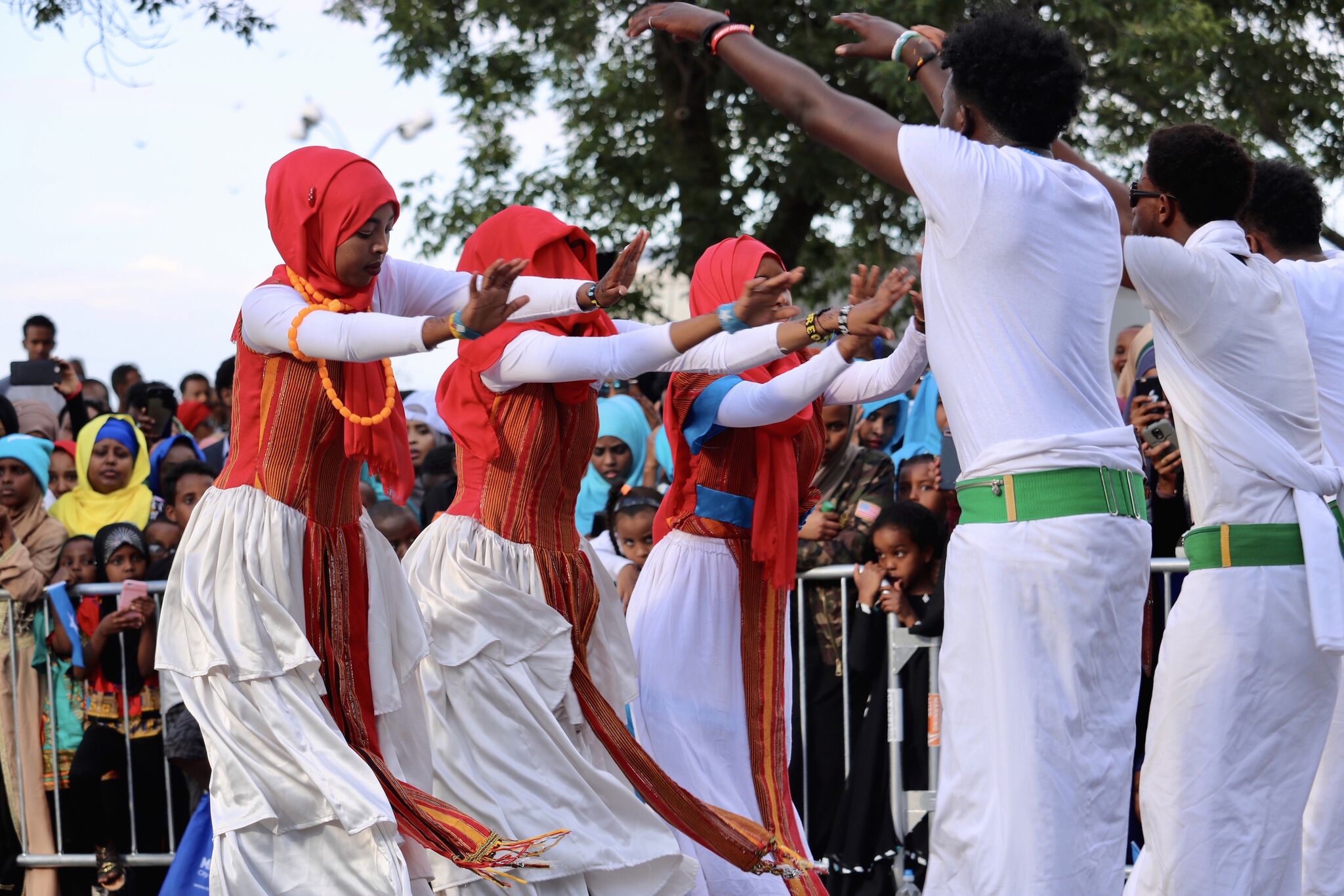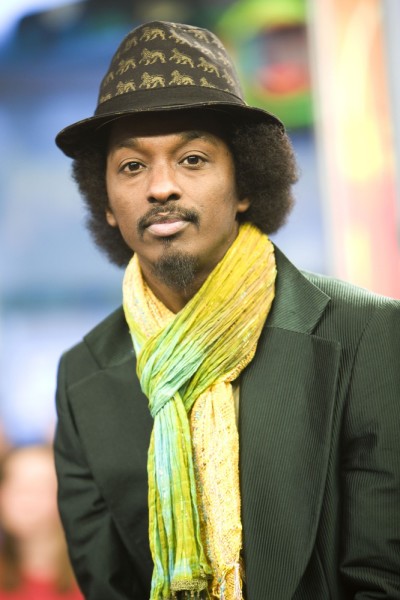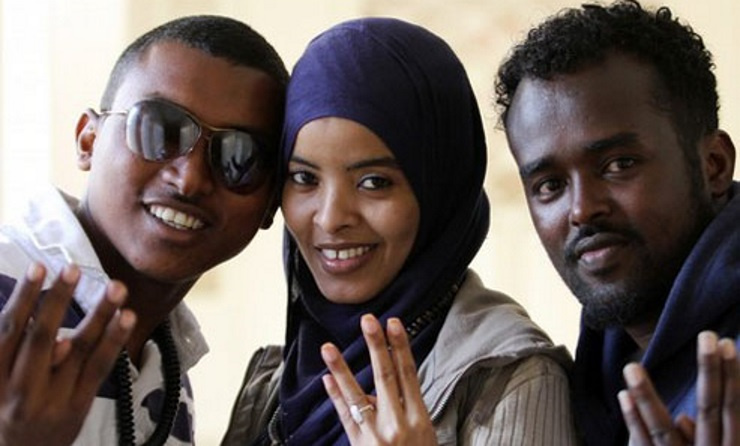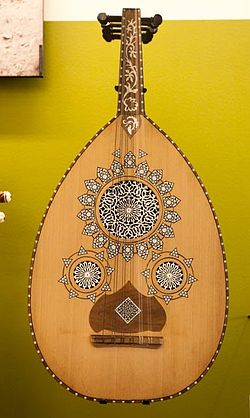 In most Western music traditions, they use a
heptatonic scale. In other words, a seven-note scale. However, much of Somalian
music is based on the five-note scale called the pentatonic scale (imagine just
playing the black keys on a piano). I typically think of the pentatonic scale
as sounding "Asian" since a few music traditions in Asia utilize it.
However, there are many other musical traditions around the world that are
based on the pentatonic scale as well. It shares many commonalities with the
music of nearly areas like Ethiopia and Sudan and even the Arabian Peninsula.
In most Western music traditions, they use a
heptatonic scale. In other words, a seven-note scale. However, much of Somalian
music is based on the five-note scale called the pentatonic scale (imagine just
playing the black keys on a piano). I typically think of the pentatonic scale
as sounding "Asian" since a few music traditions in Asia utilize it.
However, there are many other musical traditions around the world that are
based on the pentatonic scale as well. It shares many commonalities with the
music of nearly areas like Ethiopia and Sudan and even the Arabian Peninsula. Somali music also utilizes many similar instruments as well. First of all, they use quite a variety of percussion instruments from different kinds of drums (like mokhoddon, massondhe, jabbu, and yoome) as well as different clappers made from metal (shagal) or wood (shanbaal), rattles (shunuuf) and xylophones (tenegyo). There are stringed instruments like lyres (shareero), lutes (kinaandha, oud), a one-stringed violin (seese), and a thumb piano (similar to an mbira maybe?) called a madhuube. Also heard in Somali music are a variety of wind instruments such as double clarinets (sumaari), flutes (malkad, siinbaar), horns (gees-goodir), and trumpets (fuugwo).
There are many different kinds of traditional dances in Somalia, and many of them vary based on region. A good portion of these dances have a basis in mimicking everyday life for them, but there are also dances that encompass folklore and historic tales. One of the most widely known dances is the Dhaanto dance. This dance mimics the movements of the camel, but is also steeped in Islamic poetry. Originally, it was specifically a dance from the Darod tribe of the Ogaden clan; however, it was revived during the early part of the 20th century as a way to rally the soldiers. Other dances found in areas of Somalia include the Wilwile (a warrior dance of the Issa people), the Jaandheer (from the Isaac tribe of Somaliland and eastern Ethiopia), the Saylaci dance (a Suufi-inspired dance of the Samaroon/Gidabursi clan), and the Niiko dance (from the Hawiye people).
The origins of what we call popular music began to form during the 1930s, and
within the next decade, lyrics based on the qaraami style of poetry popularized
by Elmi Boodhari became the thing. In fact, it's still popular today. (Some
things are timeless, right? I still listen to American music of the 1930s and
1940s.) Today many musicians and bands have mixed traditional styles with the
modern styles of rock, pop, jazz, and even other world styles like reggae and
bossa nova.
I found several artists on Spotify that I sampled. The first was Aar Maanta. I
liked what I heard from him. It was kind of chill, with a reggae feel at times
and uses strings and horns in much of his music. I’m not even sure what I’d
call it, but I just know that I like it.
 |
| Aar Maanta |
Yasminah was an R&B musician I listened
to who’s actually a Somali-American. She kind of reminds me of Kenza Farah,
except her songs are all in English (at least the ones I heard). I liked the
few songs I listened to.
And then I listened to Dur-Dur Band. Very
much of an older style that reminds me of an African blues style and funk at
times. The instruments I noticed is their use prominent use of the bass guitar
and the organ in the background. They even have a song called “Dab” which I
showed my almost-10-year-old son who dabs All. The. Time.
 |
| K'naan |
I finally listened to K’naan, a
Somali-Canadian rapper. I loved it! I have heard of him but maybe only to the
extent of seeing his name. He definitely uses a lot of African styles and
themes mixed into his music. Many of his songs seem to use rock and funk and
other styles as the basis underneath it all – kind of like what Bliss N Eso
does.
 |
| Maryam Mursal |
Another musician whose music seems to
integrate some funk and folk rock influences here and there is Maryam Mursal.
The vocal styles are still definitely steeped in African and Arabian techniques,
but it’s interesting to listen to the merge of several cultures.
 |
| Waayaha Cusub |
Finally, I listened to Waayaha Cusub. This
group mixes Middle Eastern styles with some hip-hop. They do a good job at
blending the rhythms of the vocal lines with the instrumental melodic lines. In
listening to their music, they span from sounding like club mixes to more chill
adult contemporary.
Up next: the food




No comments:
Post a Comment